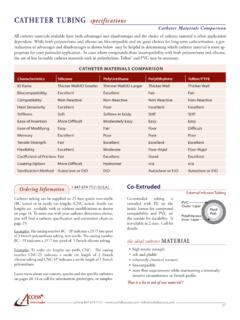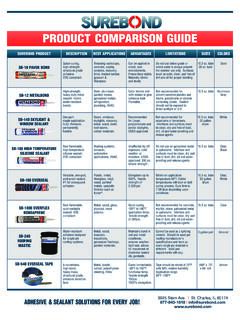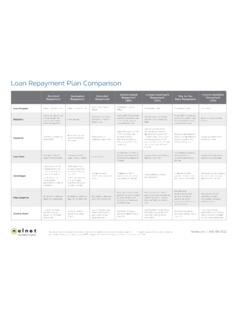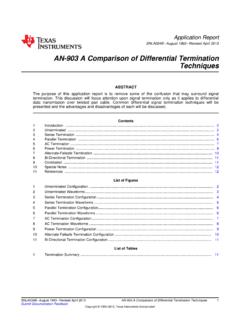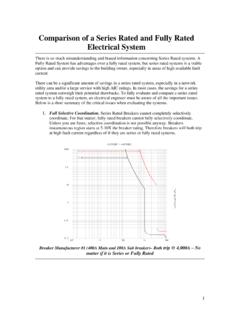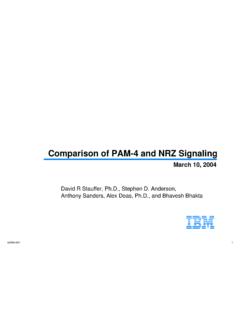Transcription of Technical comparison of On-line vs. Line …
1 Technical comparison of On-line vs. line -interactive UPS designs White Paper #79 By Jeffrey Samstad Michael Hoff 2004 American Power Conversion. All rights reserved. No part of this publication may be used, reproduced, photocopied, transmitted, or stored in any retrieval system of any nature, without the written permission of the copyright owner. Rev 2004-0 2 Executive Summary UPS systems below 5000VA are available in two basic designs: line -interactive or double-conversion On-line . This paper describes the advantages and disadvantages of each topology and addresses some common misconceptions about real-world application requirements.
2 2004 American Power Conversion. All rights reserved. No part of this publication may be used, reproduced, photocopied, transmitted, or stored in any retrieval system of any nature, without the written permission of the copyright owner. Rev 2004-0 3 Introduction Most of the factors that go into deciding which UPS to purchase are visible and easily understood: battery back-up time, cost, size, manufacturer, number of outlets, manageability, etc. But there are also less visible factors that are not so easy to understand. One of the least understood, yet most discussed, is topology.
3 The topology (internal design) of a UPS affects how it will operate in various environments. Selecting the right topology can be complicated by claims that certain topologies are superior and absolutely necessary for mission-critical applications. Because these claims typically come from manufacturers trying to sell their so-called superior topology, it is difficult to make an informed decision based on such claims alone. The goal of this paper is to speak objectively about the advantages and disadvantages of the two most common topologies: line -interactive and double-conversion On-line .
4 At the high and low ends of the power spectrum there is little debate about the relative merits of these two topologies. 1 Above 5000VA, line -interactive has historically been impractical due to its larger size and greater cost. At the low end, below 750VA, double-conversion On-line is rarely considered because other topologies (including line -interactive) are more practical for smaller loads. Debate regarding double-conversion On-line vs. line -interactive topology usually focuses on the power range between 750VA and 5000VA. This is where the functional and economic advantages of one topology over the other are not so clear and depend upon the particulars of the installation.
5 While line -interactive has become the most commonly manufactured and deployed topology in this power range, advancements in semiconductor technology and manufacturing techniques have brought down the price premium of double-conversion On-line over line -interactive, making the choice between the two harder than in the past. Selecting the best topology in this overlap range requires an understanding of the tradeoffs associated with each topology. Understanding Your Application Before making any decision about UPS topology, it is important to understand the requirements of the equipment to be protected and the environment in which the UPS will be installed.
6 Knowing these basic requirements is essential to an informed decision on the UPS topology that will best serve the application. IT Equipment and AC power: The Switch-Mode Power Supply (SMPS) Electricity is generally distributed as alternating current (AC) power from utilities and backup generators. AC voltage alternates between positive and negative ideally as a perfect sine wave passing through zero volts twice per cycle. It may not be noticeable to the naked eye, but a light bulb connected to utility voltage 1 At very high power 200,000VA and greater a different debate focuses on the relative merits of double-conversion On-line vs.
7 Delta-conversion On-line . See APC White Paper #1, The Different Types of UPS Systems, for a comparison of these two On-line topologies. 2004 American Power Conversion. All rights reserved. No part of this publication may be used, reproduced, photocopied, transmitted, or stored in any retrieval system of any nature, without the written permission of the copyright owner. Rev 2004-0 4actually flickers 100 or 120 times per second (for 50 or 60 cycle AC) as the voltage crosses zero to change polarity. How does IT equipment use AC electricity to power its processing circuits?
8 Does it also turn off 100 times or more per second as the line voltage changes polarity? Clearly, there is a problem here that IT equipment must solve. The way that virtually all modern IT equipment solves this problem is with a Switch-Mode Power Supply (SMPS).2 An SMPS first converts the AC voltage with all of its non-ideal components (voltage spikes, distortion, frequency variations, etc.) into flat DC (direct current). This process charges an energy storage element, called a capacitor, which stands between the AC input and the rest of the power supply. This capacitor is charged by the AC input in bursts twice per AC cycle when the sine wave is at or near its peaks (positive and negative) and discharges at whatever rate is required by the IT processing circuits downstream.
9 The capacitor is designed to absorb these normal AC pulses along with anomalous voltage spikes continuously over its entire design life. So, unlike the flickering light bulb, IT equipment operates on a steady flow of DC instead of the pulsating AC of the utility grid. This is not quite the end of the story. Microelectronic circuits require very low DC voltages ( , 5V, 12V, etc.) but the voltage across the capacitor just mentioned can be as high as 400V. The SMPS also converts this high-voltage DC to tightly regulated low-voltage DC outputs. In doing this voltage reduction, the SMPS performs another important function: it provides galvanic isolation.
10 Galvanic isolation is a physical separation in the circuitry that serves two purposes. The first purpose is safety protection against electric shock. The second purpose is protection against equipment damage or malfunction due to common-mode (ground-based) voltage or noise. Information about grounding and common-mode voltage is available in APC White Papers #9 ("Common Mode Susceptibility of Computers") and #21 ("Neutral Wire Facts and Mythology"). Figure 1 shows a piece of IT equipment (a server in this example) that is protected by a UPS. The internal components of the server, including the SMPS, are also shown.





